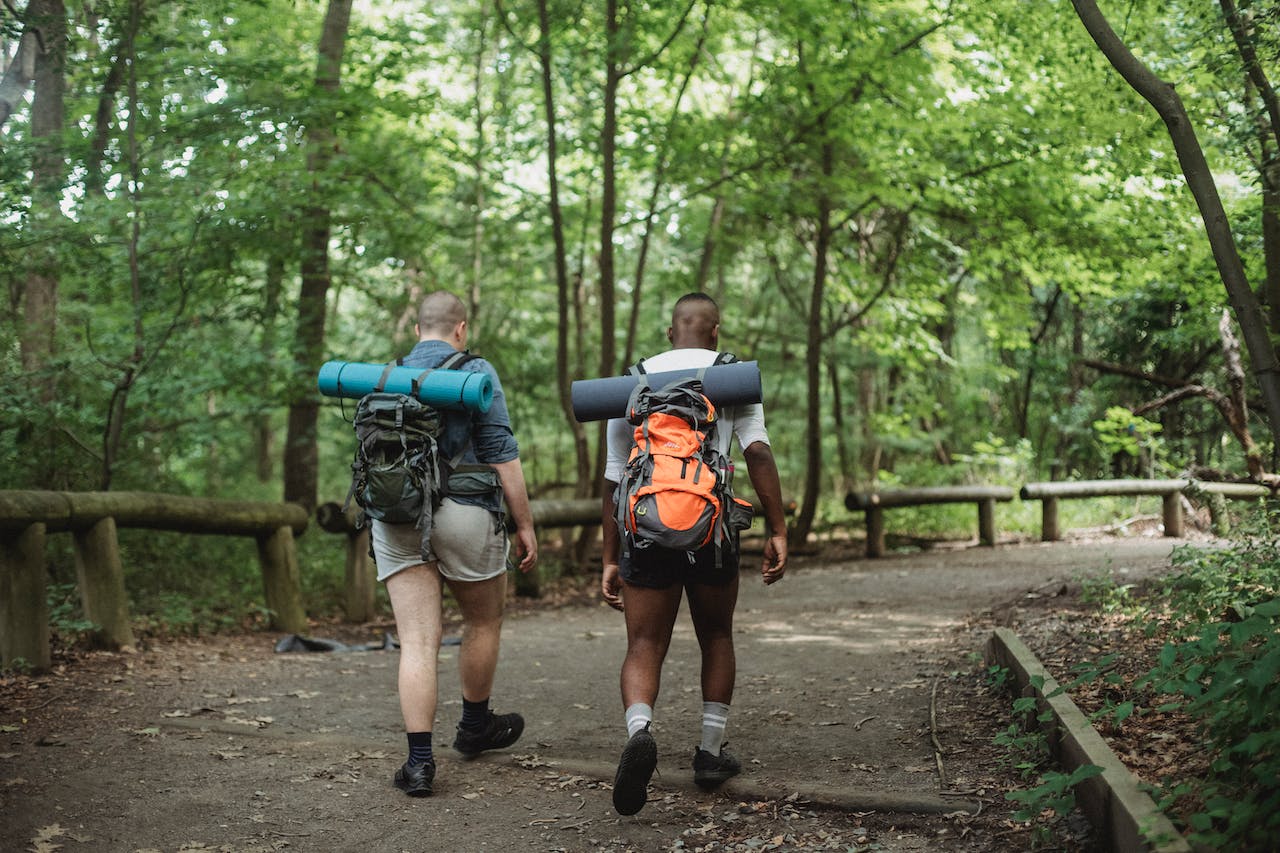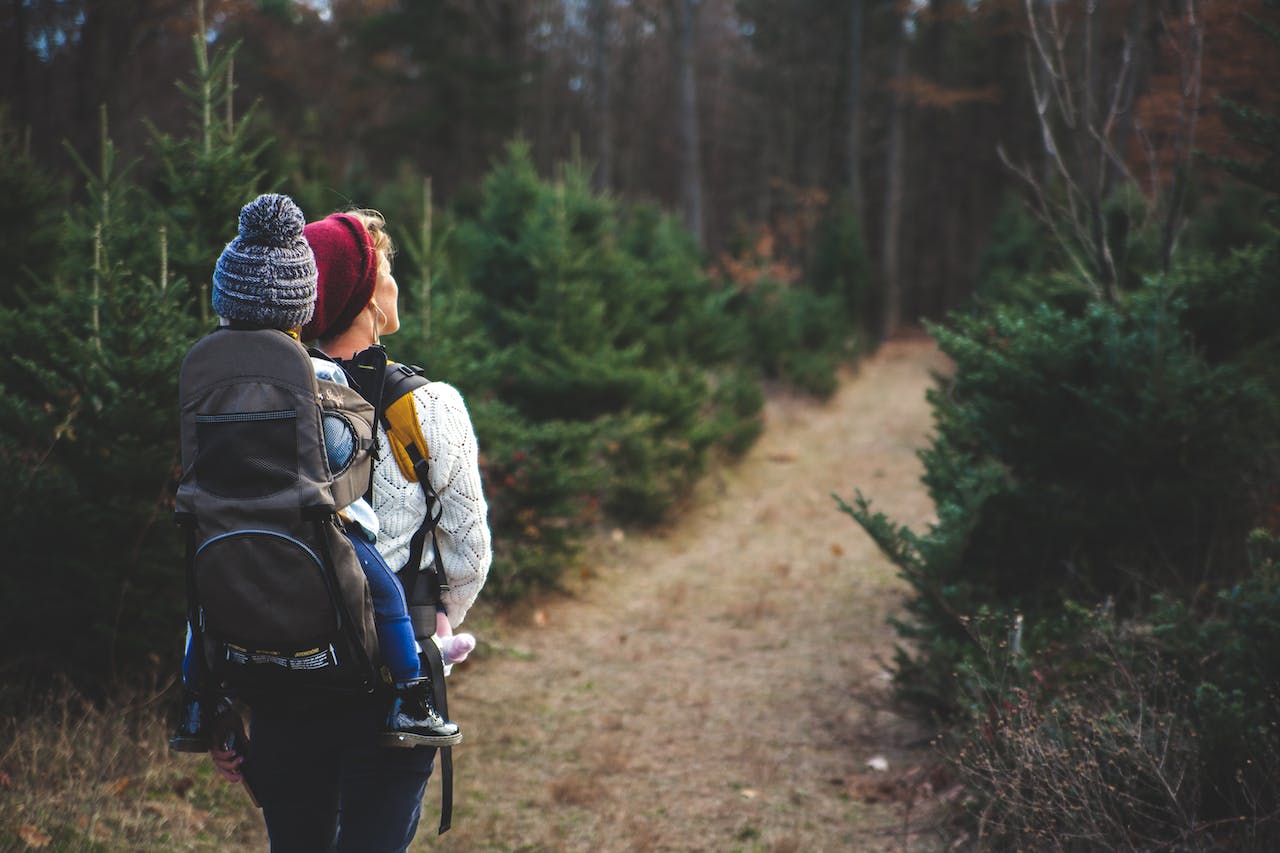
We are pleased to welcome Tom Willemann, Physical Therapist and Owner of Apex Orthopedic Rehabilitation in Wyckoff, New Jersey, as a guest blogger. Tom brings over 25 years of experience helping people meet their goals to remain active and independent through exercise. For additional guidance on resuming an active lifestyle following an injury, or for inquiries related to orthopedic and sports-related injuries, please feel free to reach out to him at tomw@apexorthopedicnj.com. Learn more about Tom and his clinic, and find links to his various informative social media channels, on Apex’s website: www.apexorthopedicnj.com.
How to Get Ready for Hiking in the Fall and Winter
For many, regular exercise can be viewed as a chore; dreaded by many, but necessary for everyone to maintain a healthy lifestyle. The benefits are numerous, as outlined by the Mayo Clinic’s article, Why Exercise? Know the Benefits. The APTA released guidelines on exercise that basically state we all need to move a little more than we currently do. (Read more of the APTA’s current guidelines in more detail here: American Physical Therapy Association.)
Health Benefits of Hiking
As the weather begins to cool and many are starting to hibernate at their local indoor gyms to walk on a treadmill or ride a stationary bike, why not start a new exercise habit? Despite the dropping temperatures, get outside instead! The reasons to start hiking year-round are clear: From controlling blood pressure to improving endurance to increasing strength and maintaining bone density, hiking offers a multitude of physical health benefits that can help you lead a more active and fulfilling lifestyle. With the proper gear, clothing, mindset and physical preparation, you can happily hike throughout the fall and winter. Autumn in North Jersey is a great time to take advantage of the beautiful foliage and venture out for a long walk in the woods. There are a ton of options for great hikes that are just a short drive from our Wyckoff clinic alone, ranging from easy gravel roads to more challenging hikes that require hiking sticks during certain times of the year.

Local Hikes to Start Exploring
I’ve been on many incredible hikes in our area over the years, but my two favorite local hikes will always be Van Slyke Ruins (off Skyline Drive) and High Mountain State Park. Both locations are in close proximity to Wyckoff and provide the additional advantage of offering a sense of being distanced from suburban life while still being linked to New York City. They boast views of the city skyline, and weather permitting, you can enjoy panoramic views of most of Manhattan in the distance. (Don’t forget to pack binoculars!) Fun fact: While hiking Van Slyke Ruins, fans of The Hunger Games might recognize the little island on Ramapo Lake, off the Fire Road, from the opening scenes.
Equipment Recommendations for the First Time Hiker
So, how do we make this hike a positive experience for all? The answer is: Preparation, preparation and more preparation.
Hiking is a great way to start a cardiovascular program that is paired with getting out in the woods, away from the stresses of the world. Before we even start to plan our hike, we first have to consider the best equipment. Necessary hiking gear includes: Proper clothing, appropriate footwear, a light backpack, a water bottle and adequate nutrition, walking sticks, and, depending how long you are out for, a downloadable or printed map. Over the years, I have stocked up on hiking equipment locally at both Campmor and REI. Both have physical locations in Paramus and have staff that truly live and breathe the outdoors; they are typically great sources of hiking information, from tents to water filtration to the right hiking boots. Additionally, I encourage you to do a bit of research before you head out to get a sense of the location’s degree of difficulty. An appAPP I’ve used, and recommend, is All Trails, which gives you a quick description of distance, difficulty level and type of terrain.
Exercise Plan for Your First Hike
While it’s necessary – and quite fun – to accumulate all of your hiking equipment, of utmost importance is being physically ready. This is especially recommended if you are not currently walking, cycling or doing some form of cardiovascular exercise. We suggest that beginners start with a simple exercise program, preferably four to six weeks prior to your inaugural hike, that encompasses the following components:
First, head to the local high school track to get an understanding of how far you can walk without feeling like you’re pushing the limit of your ability. Most high school tracks are a quarter mile and, of course, flat. Record your start and end time on your watch, and track your distance. This will serve as a baseline for your fitness program and give you an idea of what length hike you should start with. Keep in mind that many variables have to be considered when determining if you can do the hike comfortably. A useful rule, which I made up and coined “The 50% Rule”, is: For every one mile you can walk on flat surfaces with minimal grade, assume you can do 1/2 mile easily in the woods. This serves as a rough guide; adjust accordingly once you have a few hikes under your belt. Please note: If you carry a heavy backpack or bring along a stubborn child who refuses to walk any further, that equation will most likely not work!
Second, try to walk outside at least three times per week, with a day of rest in between, for four to six weeks prior to going on your first hike. If you plan a hike with hills, pick walks that simulate the demands of your first hike. Another alternative is to join a local gym and hop on a treadmill; many simulate hills as well as your desired pace.

Next, consider your flexibility and mobility issues. It is always easier to manage rocks, low branches and various inclines deep in the woods with good baseline flexibility. Every sport or activity has its specific demands; a gymnast has very different demands than a powerlifter. If you are really interested in improving general mobility and flexibility, taking yoga a couple times a week is a nice alternative leading up to your first hike. For many, the demands of hiking, especially ones of relatively modest hills or very little in the way of obstacles, much focus in this area may not be necessary.
I’m going to highlight a few basic stretches that should take only 10 minutes daily. One of the keys to effective stretching is daily stretches at a long duration, at least 30-60 seconds in length, at the end of the available range of movement. You should feel pressure at the end of the stretch, but not pain. If you do find it to be slightly uncomfortable, it should be mild and dissipate within a few minutes. Remember: You should feel good at the end. I prefer stretching after being up and active for at least 15 minutes or after a 5-10 minute walk. Each stretch should be performed a minimum of three times for 30- 60 seconds each day.
Here is a list of the stretches I recommend for a return to hiking:
Here is a list of the top strengthening exercises for hiking:
All exercises should be done in three sets of eight reps with two minutes of rest in between sets. If you can easily do more, we will show you ways to increase the difficulty of dumbbell weights. In the early stages, don’t worry about weight, but going forward, once you can do over 15 reps, you should add weight in order to make strength gains.
The last piece worth adding to your program is balance exercise. If you are interested in finding out how good your balance is, try the Unilateral Stance Test. This is how we do the test in the clinic: With eyes open and hands on hips, the patient stands on one leg unassisted; time begins when the opposite foot leaves the ground; time stops immediately when the opposite foot touches the ground and/or when hands leave the hips. If unable to stand for five seconds or less, you are at a greater risk of injury from fall. The “Single Leg Stance, With or Without Leg Swing” is a simple exercise based on the balance test just discussed.
Keep in mind, most of this advice is for the beginner hiker and more sedentary person who wants a good entry point to becoming more active. For more active individuals, you may already be strong enough to perform and are ready to venture out into the woods! Exercising out in nature is one of my favorite things to do, whether it be mountain biking, hiking or downhill skiing. I hope you find this blog to be inspiring and these tips to be helpful. Best of luck!
To contact Tom Willemann, Owner and Physical Therapist from Apex Orthopedic Rehabilitation, please visit the clinic’s web site at www.apexorthopedicnj.com, call the clinic at 201-251-2422, or email the clinic at info@apexorthopedicnj.com.
Medical Disclaimer: The information provided by Tom Willemann from Apex Orthopedic Rehabilitation in Wyckoff, New Jersey is for informational purposes only and is not intended as a substitute for advice from your physician or other healthcare professional. You should not use this information for the diagnosis or specific treatment of any health problem or for prescription of any medication or other treatment. You should consult with a healthcare professional before starting any diet, exercise, or supplemental program, before taking any medication, or suspect you might have a health problem. You should not stop taking any medication and/or should not discontinue any prescribed treatment or exercise without first consulting your physician. The opinions expressed by Tom Willemann from Apex Orthopedic Rehabilitation are of the author and the author alone.